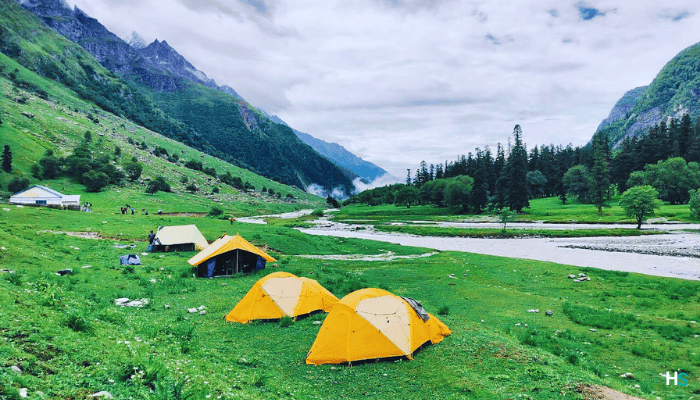
Kanamo Peak Trek
TREK DIFFICULTY
Moderate
TREK DURATION
7 Days
HIGHEST ALTITUDE
19500 ft
GROUP SIZE
12
TREK DISTANCE
27 km
BASECAMP
Himachal Pradesh
BEST TIME
June to September
PICKUP POINT
Himachal Pradesh
Kanamo Peak Trek Expedition Overview
Kanamo Peak Trek is one of the most thrilling high-altitude treks in our country. Himachal Pradesh is renowned for its numerous high-altitude treks and expeditions. Doing the Kanamo Peak summit means a lot. Kanamo Peak Trek is located in the heart of Spiti Valley, Himachal Pradesh. The altitude of this summit is 19,600 feet, which is almost 20,000 feet. Trekkers often refer to it as “White lady” as you can witness the majestic Himalayan peak with a height of 6000 m. This is one of the only few summits where you climb nearly 6000 m without any requirement for technical climbing skills.
In the Kanamo Peak Trek, you start your journey from Kibber, which is an ancient village in the Spiti Valley. This trek is beautifully curated through high-altitude deserts, mountains, and snowfields. When you are on the trek, you will witness stunning sunrises over the Himalayas. Once you start in the snow-covered region, you get the panoramic view of Kinnaur, Ladakh, and Lahaul.
Kanamo Peak Summit is less crowded than other high-altitude treks in the Himalayas. Not many trekkers opt for this trek, as it requires the fittest of the fittest. But the thrill in this trek is inimitable. Attempting a summit of about 20,000 feet is not everyone’s cup of tea. However, the view from the top of the summit is worth all the difficulties. You will get a picture-perfect vision of miles and miles of snow-covered huge mountains.
Day 1: Drive from Manali to Kaza
Day 2: Short drive from Kaza to Kibber
Day 3: Acclimatisation day at Kibber
Day 4: Trek from Kibber to Kanamo Base Camp
Day 5: Trek from Kanamo Base Camp to Kanamo Peak and back to Kanamo Base Camp
Day 6: Trek from Kanamo Base Camp to Kibber
Day 7: Drive from Kibber to Manal
Himalaya Shelter offers the best customized trekking services. We have a team of professionals who will guide you on your adventure. You can contact the team and can get a fully customized Kanamo Peak Trek. Our team will take care of travel and accommodations. Meals will be served as per your request. Our certified trek leaders and staff will take care of you during the whole trek.
You can make a call and talk to our team about customizing your Kanamo Peak Trek by Himalaya Shelter. We can also make add-ons to your special requests. Be our guest and we will take care of everything!
The word “Kanamo” means “White Lady” in the local language of Spitian. This peak probably got this name due to the snow-covered summit. When the sunlight falls over the peak, the range looks very majestic. The Kibber village which is the home to this trek is one of the highest inhabited villages in the world. Today, not many people know about this village as it is situated in a very remote area. However, in ancient times, this was a hugely accessible Spiti trade route. This route once connected Tibet to India.
Before the 2000s, Kanamo was largely unexplored by the trekkers. As we all know, Mountains are the home of God. In the Spiti region, Kanamo Peak is considered sacred which means people have barely ascended it. In both Hinduism and Buddhism, mountains like Mount Kailash, and Mount Nanda Devi are the abode of God. Due to this belief, Kanamo was a lesser-known non-technical summit to the trekkers. In the late 2000s, high-altitude trekking became very popular. Even people with no mountaineering started exploring high-altitude treks. Treks like Stok Kangri became very popular among the trekkers. However, Kanamo Peak Trek was an underrated summit for a long time.
Today, trekking has become popular among the youth. The routes are well-developed and easy to access. Due to this, many 6000m summits are becoming crowded. Now, Kanamo Peak Trek is gaining a name among people who want to do high-altitude summits without mountaineering experience. Local people are also supporting the summit for eco-tourism.
-
About 6000m non-technical summit!
The mountains are huge! But, not all the mountains have this good elevation. Summits over 6000m are considered pro-level. You need excellent skills to summit these mountains. But Kanamo Peak is a beginner-friendly trek. If you have experience on 5000m treks without mountaineering experience, you can do this trek. Kanamo Peak is 19,600 feet tall and you can summit it without professional mountaineering gear. You only need a very good fitness and strong will.
-
The journey starts from Kibber
Your Kanamo Peak Summit starts from one of the majestic villages of our country. This village is at an altitude of 4,200 m which makes it one of the highest inhabited villages in the world. Before the trek, you need 2 or 3 days for acclimatization. You can experience this cultural gem with lots of monasteries and dry mountains. At night, you'll be all by yourself under the beautiful sky. No internet, silent mountains, and cold breeze will fill your heart with peace.
-
Majestic panoramic Himalayan views
When you ascend the summit, you will see some of the most beautiful Himalayan ranges. On the top of the summit, you will have a 360 panoramic view of Pin Parvati Pass, Kinnaur ranges, Ladakh mountains, and the beautiful Lahaul ranges. It feels like standing above the clouds surrounded by beautiful valleys.
-
Beautiful and achievable adventure
This trek can truly push your limits! The summit starts before dawn and you have to trek for about 12-14 hours. Go for this trek only if you are powerful both physically and mentally. You have to walk over rocky trails, steep climbs, and many more. Snow can also make your trek more difficult. Every meter to the summit is a kind of test. But remember, your strength and focus will surely result in beauty and adventure.
-
Support Eco-Tourism
Trekking is only done right when you are not causing any harm to the place and culture. If you are thinking about Kanamo Peak Trek, plan it in a sustainable way. Respect the local customs, follow the suggested trails, and carry back all the waste. Connect to the local people and try to experience their culture. Have local food, visit monasteries, and get involved in the high-altitude lifestyle.
Most trekkers rate this trek as moderate to difficult. The difficulty level increases not due to the high altitude but the endurance. You don’t need mountaineering expertise to summit The Kanamo Peak but you surely need lots of physical strength.
-
High-altitude challenges
Trekking at about the height of 6000 m is not easy. These summits are often rated as Difficult. Once you start walking over 4,500 meters, you might start feeling breathless. The air starts becoming thinner and people often face AMS problems. Trekkers should stay 2-3 days in Kibber village for acclimatization.
-
Physical fitness
Your physical fitness is the biggest challenge in Kanamo Peak Summit. If you are not fit, you can’t do this trek. You need to make your body and mind very strong before planning this trek. On the summit day, you will trek for 12-14 hours. Long hours ascending the summit can be very challenging. You have to carry your backpack which aids the difficulty level. The climbs are very steep and the resting time is very low. Prepare your body weeks before starting the Kanamo Peak Trek. If you can run 5km in under 40 minutes you are good to go.
-
Big no for the beginners
Kanamo Peak Trek does not require any mountaineering skills. The trekkers don’t require ice axes or any special mountaineering tools. If you are equipped with your trekking gear, you can do this summit. But! If you don’t have any experience in high-altitude trekking, a big no for you. Mountains are beautiful but can be very dangerous. If you know nothing about high-altitude trekking, don’t choose this summit. You should gain experience in treks like Rupin Pass before Kanamo Peak Trek.
The best time to summit Kanamo Peak is from mid-June to mid-September. Most of the high summit treks are open only in the summer. In winter, reaching the base camp is even very difficult. You can do a winter Spiti tour as it looks like a town from a fairytale. However, you can’t do the summit in winter because the roads to Kibber may be closed. The temperature may drop to -15 ℃.
-
Kanamo Peak Trek in June
If you like snow then you can plan your trek in June. You can see snow on the summit or even at the base camp. Daytime, the temperature can be around 5-10℃. At night, it can drop to -2 to -5℃. Acclimatization can be difficult in this season. If you have good experience in snow trails then you can do this summit in June.
-
Kanamo Peak Trek in July
In July, the trail will be much clearer. You can do this trek much more easily. There will be no snow in the base camp. It will be green and beautiful. Daytime temperature can range from 8 to 12℃ while night can be around 0 to -3℃. You may also witness wildflowers blooming in meadows.
-
Kanamo Peak Trek in August
August is the best time to summit Kanamo Peak. You will find clearer trails and the temperature will also feel nice. People are often concerned about the monsoon as landslides are quite common during this time. However, Spiti is in the rain-shadow area, and it remains dry even in the monsoon. The high-altitude meadows will be covered with flowers and the scenes will be unmatchable.
-
Kanamo Peak Trek in September
The tail will be dry and you can experience the Autumn of Spiti. The visibility will be excellent in September and the changing colors can steal your heart. Plan your trek in early to mid-September as it may start snowing at the end of the month.
To start your Kanamo Peak Trek, you have to reach Kibber village. This is a very remote location and there is no direct bus from any big cities. You can reach Kibber either from Manali or Shimla.
Route 1: Manali To Kibber
- Delhi to Manali
Manali is a very famous hill station in Himachal Pradesh. You can take a bus from Delhi or Chandigarh to Manali. This is the most preferred route to Kibber. Both HRTC and private bus services are available. But the route only opens from June to October. Take an overnight bus and you will reach Manali the next morning.
- Manali To Kaza
After reaching Manali, you can look for direct buses to Kaza. HRTC also has direct buses, checking the bus timings and seat availability ahead. Some other private taxis and shared jeep survives are also available.
- Kaza to Kibber
After reaching Kaza, you have to travel to the base point of Kanamo Peak. You can take a shared taxi as the distance is only 18 km. After reaching the Kibber, you should rest for at least 2 days before starting your trek.
Route 2: Shimla To Kaza
- Delhi To Shimla
You can take an overnight bus from Delhi or Chandigarh. Many shared taxis and private buses also provide these services.
- Shimla To Kaza
This is a longer router to Kaza but the road conditions are much better. You can travel to Kaza via Shimla all year round. You can take a bus from Shimla to Reckong Peo. The next day, take a bus to Nako or Tabo. Now you have to travel from Tabo to Kaza.
- Kaza to Kibber
Take a taxi from Kaza to Kibber. After reaching Kibber, you have to trek for around 7 km to reach the base camp.
Physical Fitness Preparation for Trek:
To overcome the difficulty level of trekking, it requires strong cardiovascular endurance, muscular strength, and overall physical fitness. Incorporate these exercises into your routine to increase strength, stability, and stamina, which will help you tackle difficult terrain sections of the trail at high altitudes.
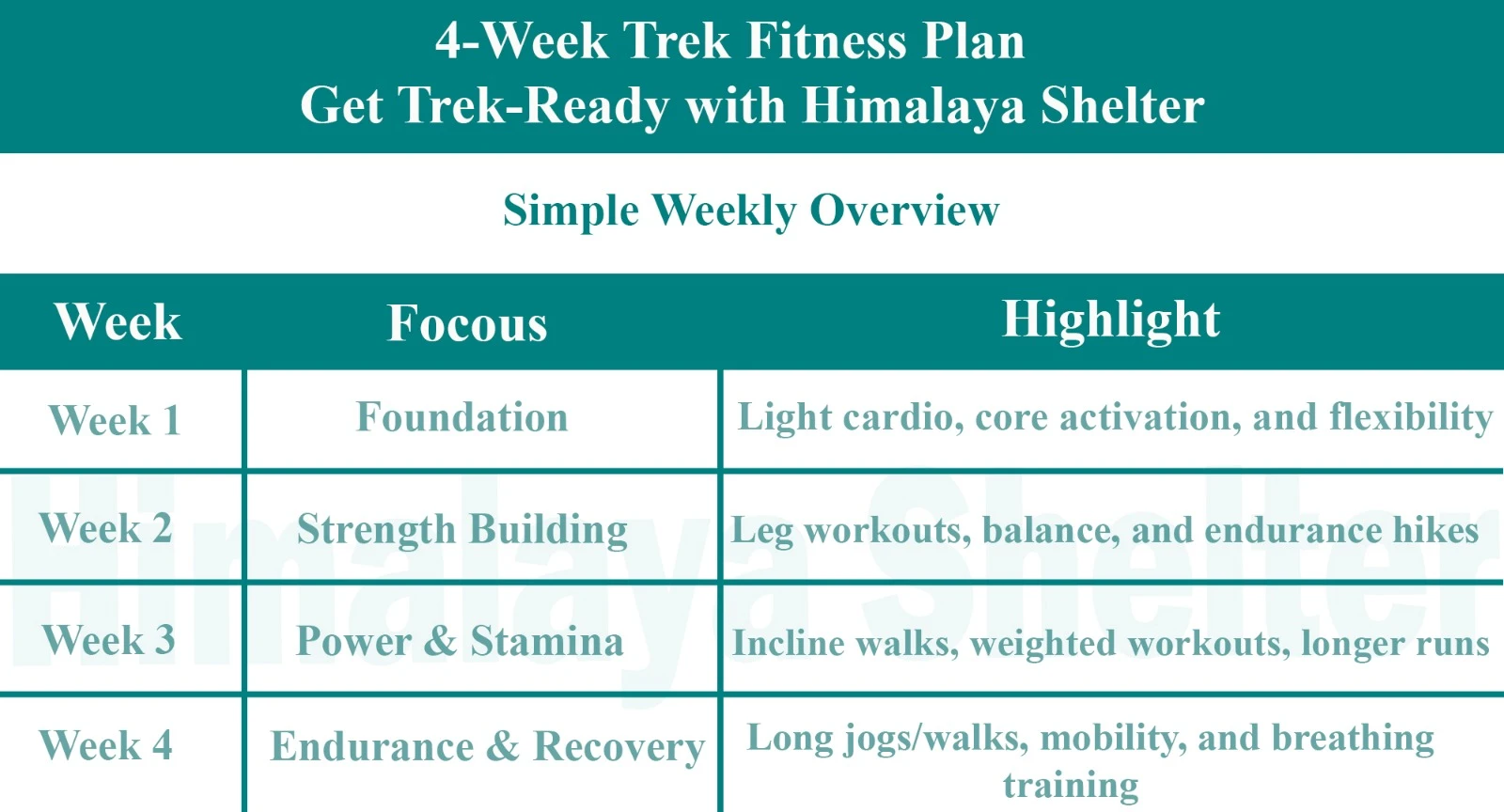
Overview
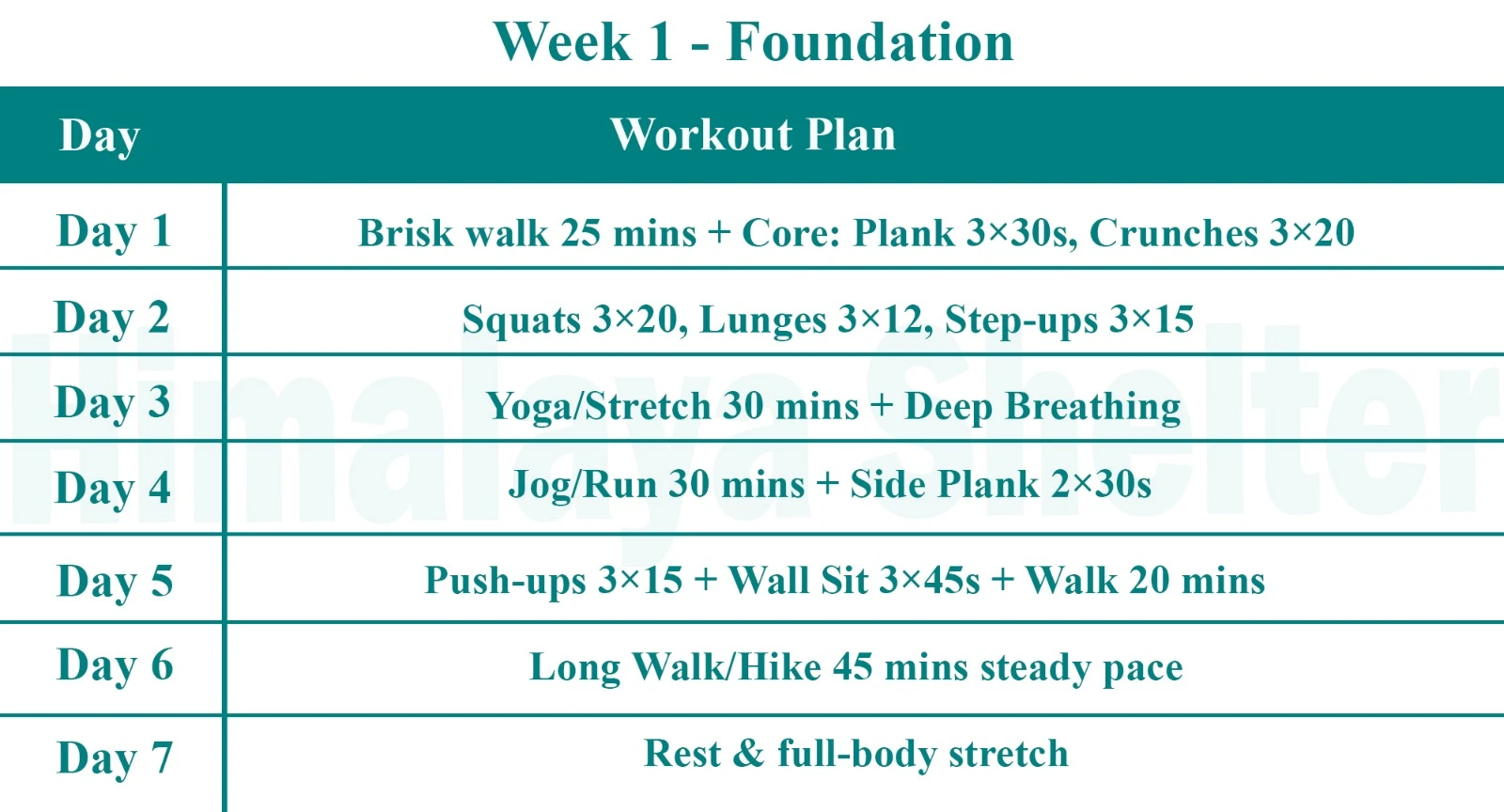
Foundation
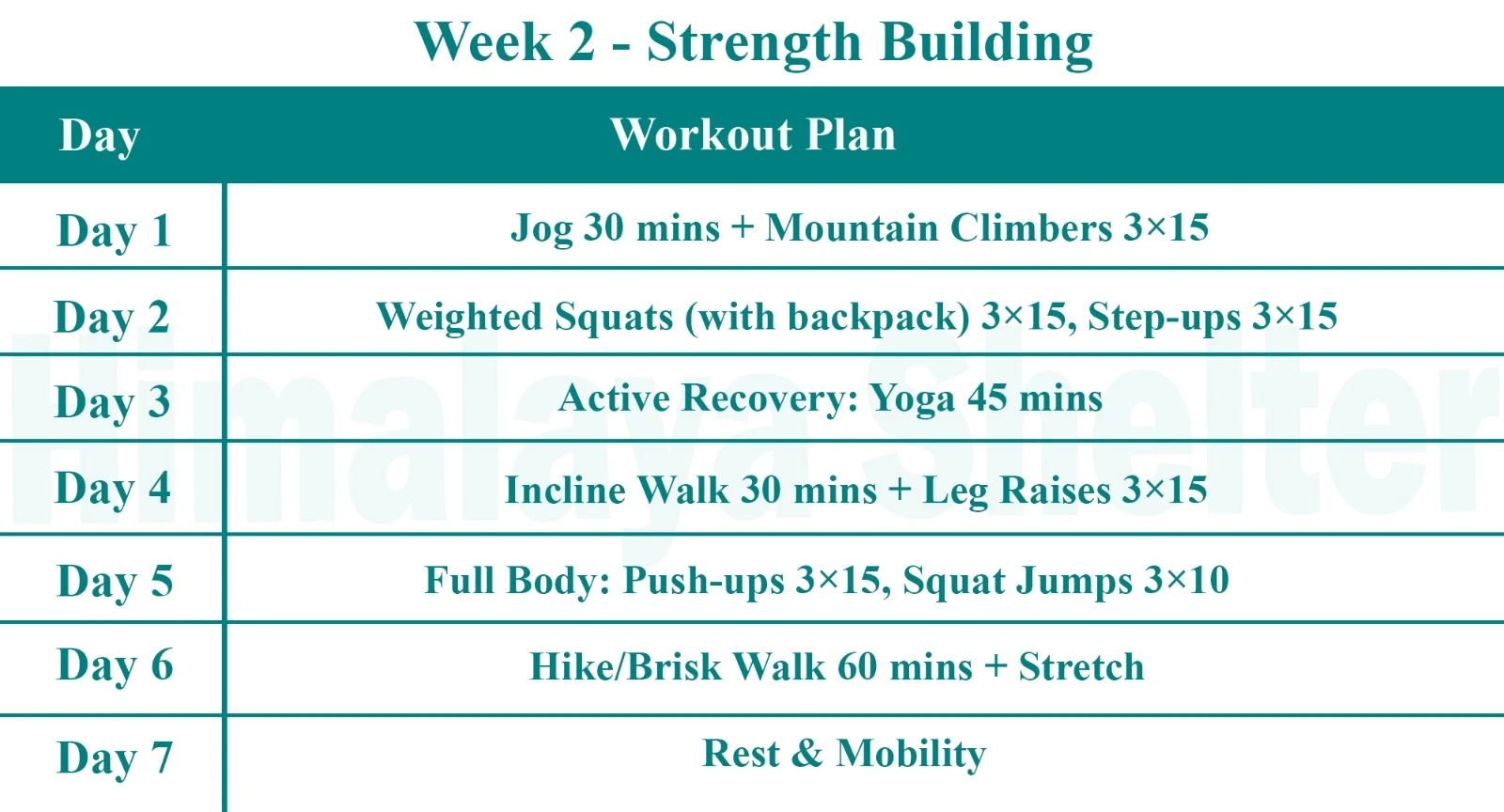
Strength Building
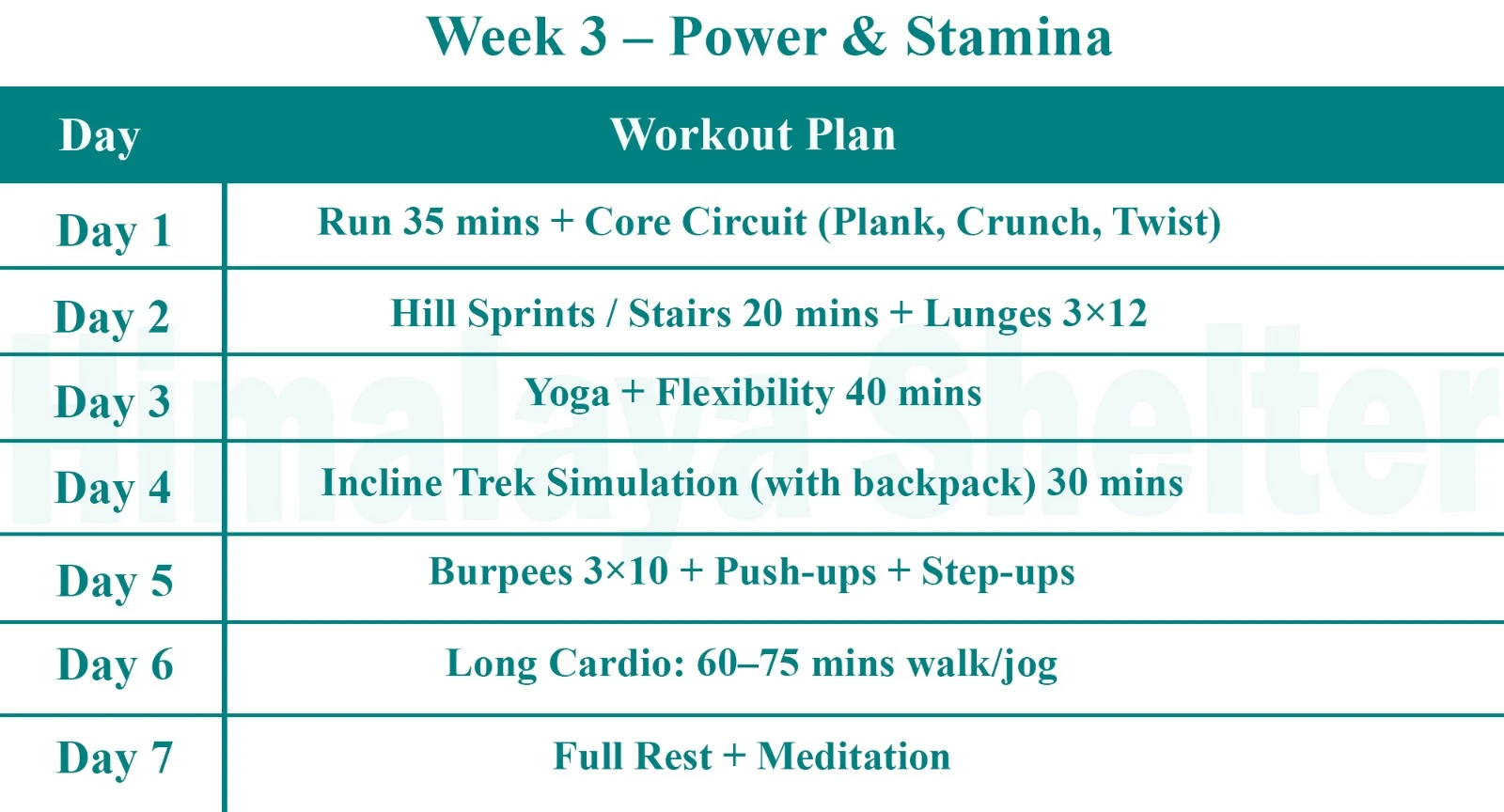
Power & Stamina

Endurance & Recovery
Day 1: Drive from Manali to Kaza
Start your day early to avoid traffic at Rohtang Pass. This high mountain pass offers stunning panoramic views of the Himalayas
You’ll reach Kaza, the administrative capital of the Spiti Valley.
- Drive Distance – 180 km
- Drive Duration – 5 to 6 hours
Day 2: Short drive from Kaza to Kibber
Start your day in Kaza, the largest town in Spiti Valley towards Kibber
you’ll reach Kibber, a picturesque village located at an altitude of 4,205 meters (13,793 feet).
-
Drive Distance – 20 km
-
Drive Duration – 1 hour
Day 3: Acclimatisation day at Kibber
Spend some time outdoors, soaking in the natural beauty and the crisp mountain air.
Go for a short, easy hike around Kibber
This could be a walk to a nearby viewpoint or a gentle stroll through the village and its surroundings.
Day 4: Trek from Kibber to Kanamo Base Camp
Begin your trek from Kibber village. The initial part of the trek may involve ascending through rocky terrain.
As you ascend, you’ll be treated to panoramic views of the Spiti Valley
Once you reach the base camp, settle in and take some time to relax.
- Trek Distance – 4 to 5 km
- Trek Duration – 5 to 6 hours
- Altitude – 14000 to 15700 ft
Day 5: Trek from Kanamo Base Camp to Kanamo Peak and back to Kanamo Base Camp
Departure Time Very early in the morning, around 3:00 AM or earlier, to make the most of favorable weather conditions and visibility.
Begin the trek well before dawn to take advantage of clear skies and firm snow conditions.
As you ascend, you’ll be treated to a spectacular sunrise over the Himalayas,
Final Push to the Summit You’ve reached the summit of Kanamo Peak, standing at an impressive altitude of approximately 5,597 meters (18,360 feet).then back to campsite
- Trek Distance – 8 km
- Trek Duration – 11 to 12 hours
- Altitude – 15700 to 19500 ft to 15700 ft
Day 6: Trek from Kanamo Base Camp to Kibber
Begin the day by descending from the base camp.
The trail will lead you back towards Kibber village. Take breaks as needed and enjoy the natural beauty around you.
Arrive back in Kibber, the picturesque village where you began your trek
Day 7: Drive from Kibber to Manal
After completing your trek, you’ll embark on a drive back to Manali.
-
Drive Distance – 180
-
Drive Duration – 5 to 6 hours
Our treks are specially designed by the experienced team at Himalaya Shelter taking you on an adventure of a lifetime all while making you connect not only with the bountiful nature but also with yourself and with others on the trek with you creating wonderful memories which will last you a lifetime. All Himalaya Shelter treks are guided by experienced Trekkers having vast knowledge and experience of the region, providing with insightful information and stories pertaining to the region’s flora and fauna and the history of the region whilst the trek. It is safe to say that on successfully completing the trek one will gain tremendous insight and experience along with lifetime memories.
Trek Inclusions
- TRANSPORTATION - Drive from Manali to Kaza at an additional cost of INR 2,000 per person. Pickup time: 6:30 am, back to Drive from Kibber to Manal at an additional cost of INR 3,000 per person.
- Accommodation – At Base Camp, stay at a local homestay or guest house for one night each, which will give you an insight into the authentic lifestyle of the locals.( INR 5000 per person extra for single sharing throughout the trek )
On Trek stay in a 2-person Vango Halo Pro/A-Shape tent, which is to be shared by two trekkers, built to withstand extreme weather conditions and at the same time making you comfortable after a hard day’s trek. - Camping Equipment – specially designed sleeping bags that can withstand harsh weather conditions, foam mattresses. Other safety gear like microspikes, gaiters, an ice axe, and helmets will be provided.
- Medical Kit – our team will be equipped with an extensive medical kit, which our team is trained and experienced to use. Oxygen cylinders are used after they are thoroughly inspected throughout the Trek. Even campsites have large oxygen cylinders as backups.
- Permission - Forest entry charges for Indian nationals (Additional charges will be applicable for international tourists)
- Meals – Breakfast, packed lunch (on trek days), evening snacks, and dinner will be served. A hearty, delicious, and nutrition-filled Veg meals with egg preparation will be provided throughout the trek. (Jain and Vegan Food can also be arranged on prior notification.)There will be a dedicated Kitchen Tent along with a dining tent, which will have a dining table too.
- Our Team – A highly experienced and AMC-certified Trek Leader who will help ensure that the entire trek goes smoothly and safely while navigating the challenging conditions during the trek, and is skilled enough to navigate any medical emergency that can arise during the trek. Local and route Guides who are well-versed with the region and provide an in-depth insight into the local customs and knowledge of the flora and fauna endemic to the region. A dedicated Kitchen staff, which includes a Cook, a helper, and other support staff. There will also be porters and mules to carry common equipment.
- Cloakroom - We have a cloakroom facility available for extra luggage. Every trekker is permitted to leave their luggage behind at no charge.
Trek Exclusions
- Personal expenses like tips, personal medicines, phone calls etc.
- Travel Expenses - Travel expenses from your hometown to the mentioned Pick-Up Point are not included in the trek fee.
From the scheduled pick-up spot to the base camp, we have our own fleet of vehicles like Bolero, Innova, Dezire, or Tempo Traveler (12-seater). This is be shared by trekkers for a pre-decided amount. All vehicles are non-AC. - Personal Equipment - Any personal gear like jackets, shoes, cutlery, or backpacks are not included in the trek fee. We recommend renting them from our Rental Store for an affordable fee. This can be pre-arranged to avoid last-minute hang-ups.
- Offloading - We encourage carrying your backpack to get into the true spirit of trekking. However, if needed, you can opt to offload your personal luggage of up to 12 kgs for an additional cost of INR 500 per bag per day.
- Trek Insurance - A mandatory trek insurance fee is charged in addition to your trek fee. Since most medical insurance doesn’t cover adventure activities, trek insurance offers essential coverage, enhancing your safety without a significant financial burden.
- Buffer day on the trek - We have kept a buffer day on the trek to account for any weather-related delay. If this is utilized, you will need to pay an extra amount to your trek leader.
- Anything apart from inclusions
- Please carry a lunch box for a packed lunch/breakfast to avoid using polythene and Aluminium foil.
Keeping the Himalayas clean is our own responsibility. Reduce the use of Plastic when you are in the abode of the Sacred Himalaya. 🌱
You can do this summit from mid-June to mid-September. The best time for the Kanamo Peak Summit is August.
You can find mobile networks on Kibber. There is no network or electricity at the base camp.
You should do at least one of the high-altitude treks like Hampta Pass or Kedarkantha.
You should have an experienced guide for Kanamo Peak Trek.
Read More on Kanamo Peak Trek
Photo Gallery

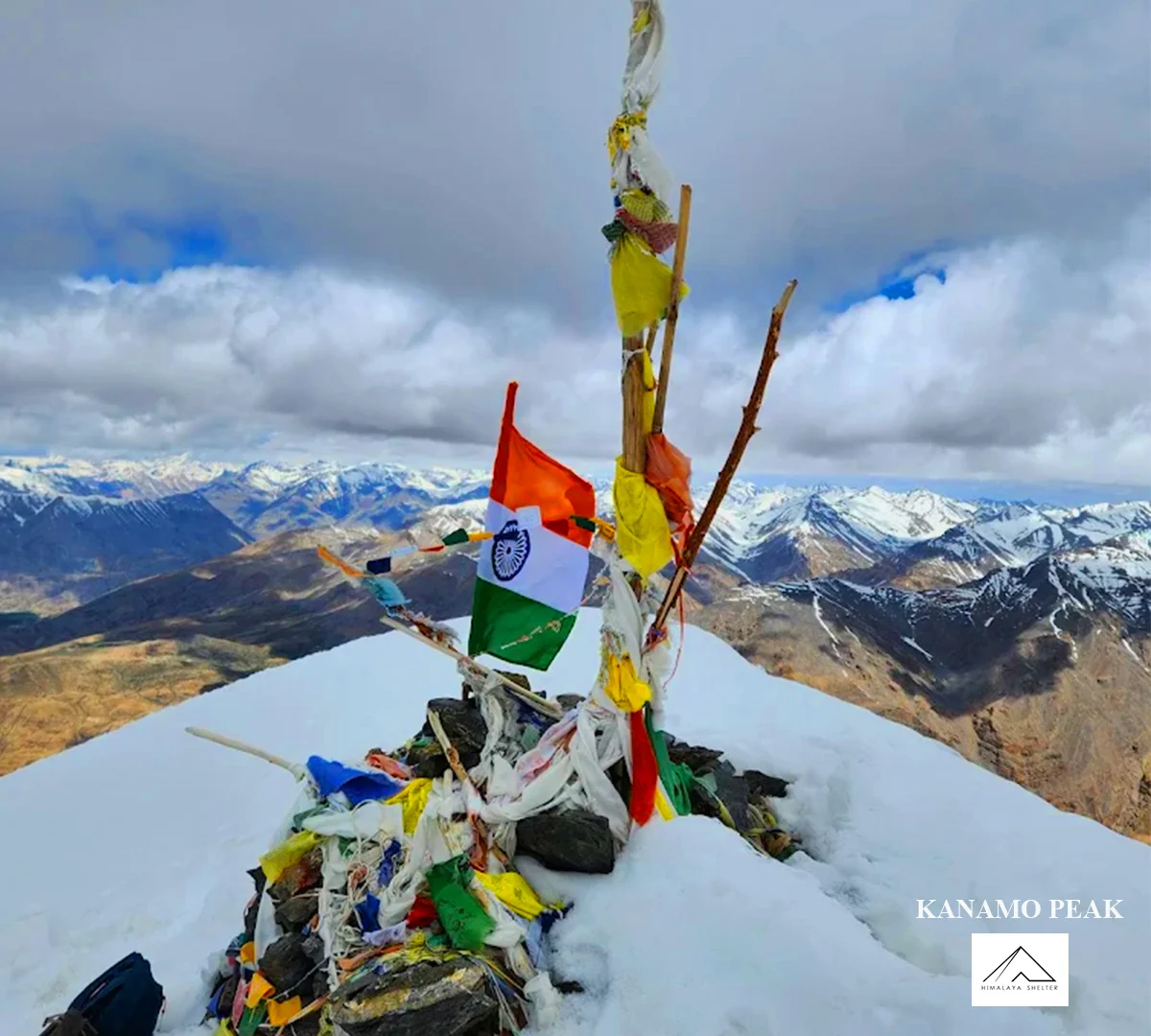
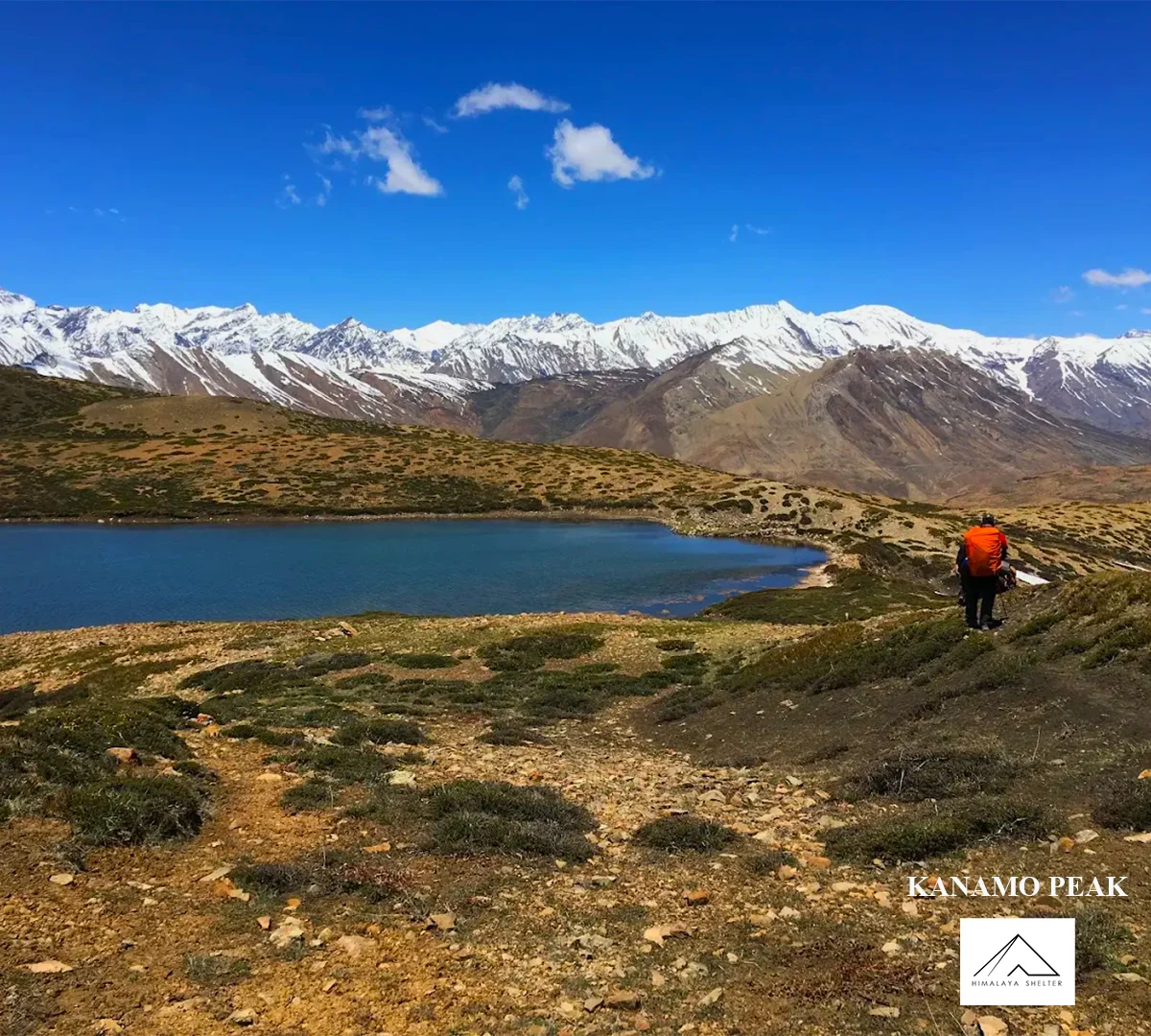
Treks by Categories
Treks By Month

Treks By Experience






